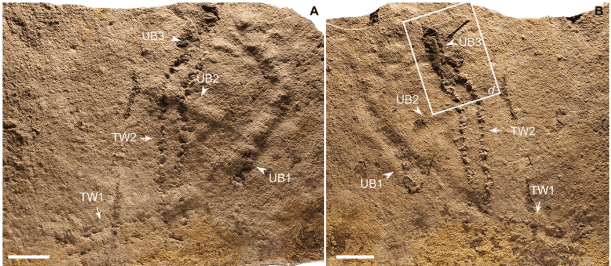An incredibly rare finding: researchers have found the tracks from a rare animal dating 551 million years ago, somewhere in the mountainous Yangtze Gorges, in southern China.

Ediacara
The footprints date from a period called the Ediacara — which spans from the end of the Cryogenian Period 635 million years ago to the beginning of the Cambrian Period 541 Mya. The Ediacara period was named after unusual creatures — enigmatic tubular and frond-shaped, the so-called Ediacara fauna was a major stepping stone on the way to evolving advanced life. The era was so long ago that many rocks from the time period have naturally disappeared, and the Yangtze area is one of the very few in the world where such well-preserved fossils can be found today.
“Ediacaran trace fossils provide key paleontological evidence for the evolution of early animals and their behaviors,” researchers write in their study. “Thus far, however, this fossil record has been limited to simple surface trails and relatively shallow burrows.”
This is where the new fossil steps in. The paleontological team found two rows of footprints that represent not only the earliest footprints ever found but also the earliest known record of an animal with legs.
They date from about 540 million years ago, researchers say.
“Previously identified footprints are between 540 and 530 million years old. The new fossils are probably up to 10 million years older,” the study’s co-author Zhe Chen, from the Chinese Academy of Sciences, told AFP.
What made them?
Researchers aren’t exactly sure how many legs the creature had — it could be two, or it could be many more. But what they can say, with reasonable certainty, is that the tracks probably belong to a bilaterian. Bilaterians are a group of animals that have paired appendages — in this case, paired legs. They are one of the most diverse animal groups in existence today.
“At least three living groups of animals have paired appendages (represented by arthropods, such as bumblebees; annelids, such as bristle worms; and tetrapods, such as humans),” Chen added. “Arthropods and annelids, or their ancestors, are possibilities.”
The print also suggests that the legs raised the animal above the sediment as it was moving across, so it wasn’t simply dragging itself. The trackways also indicate a connection to burrowing, suggesting that whatever animal made the tracks might have had a habit of digging into sediments. However, without a fossil record, it’s hard to make any solid assumptions about the creature. No fossils has been found in the fossil record, and the odds are it never will be found — it was a stroke of luck that the tracks were even preserved.
However, the footprints represent the mark of a new age for life on Earth — a period where advanced life started to emerge and thrive.
Journal Reference: Zhe Chen et al. “Late Ediacaran trackways produced by bilaterian animals with paired appendages”. Science Advances 06 Jun 2018. DOI: 10.1126/sciadv.aao6691






